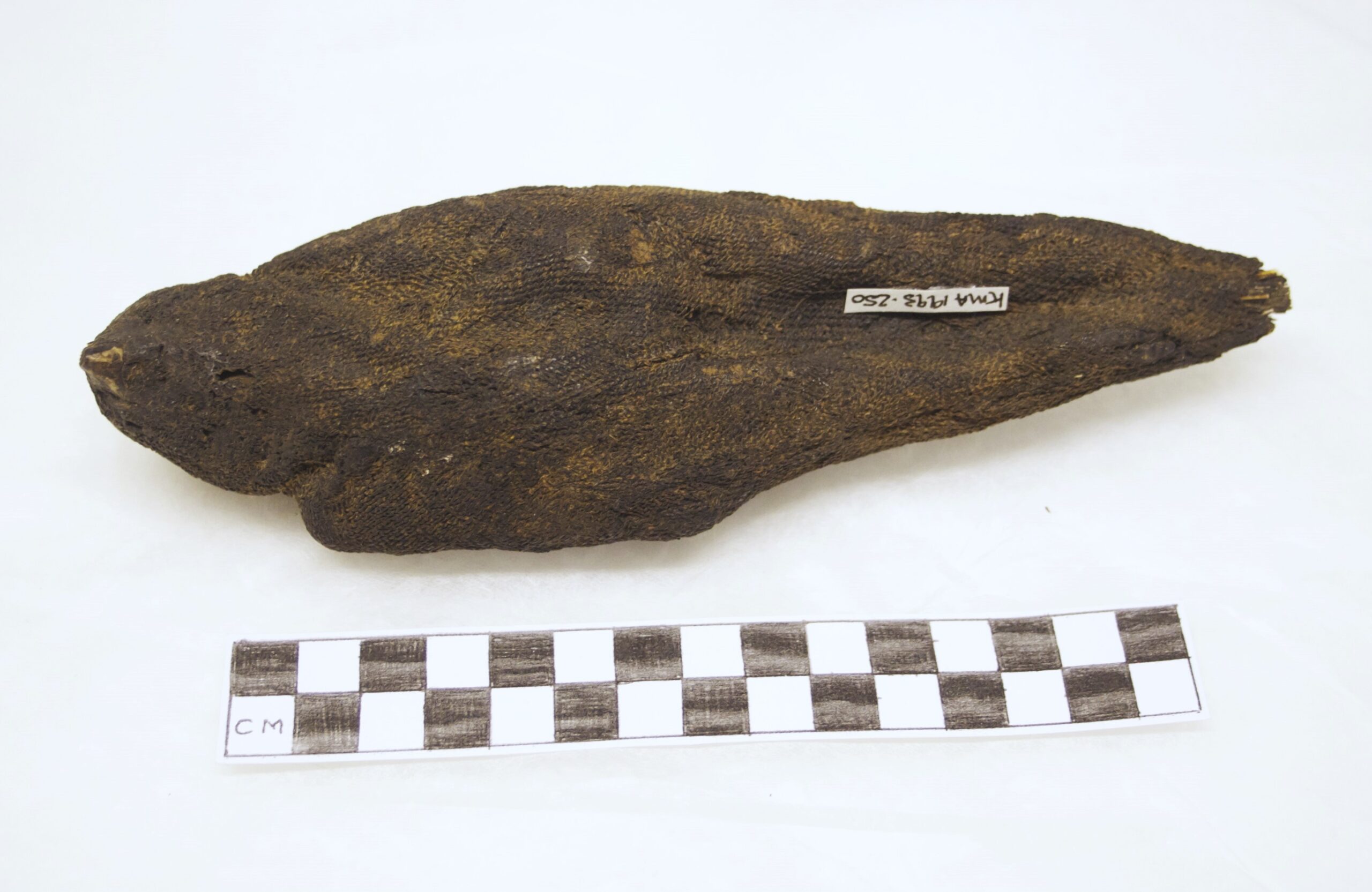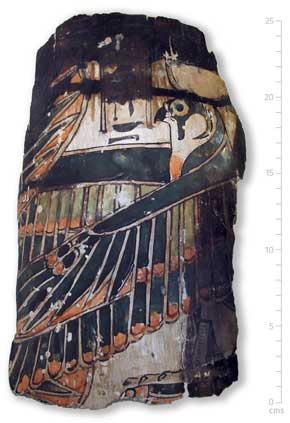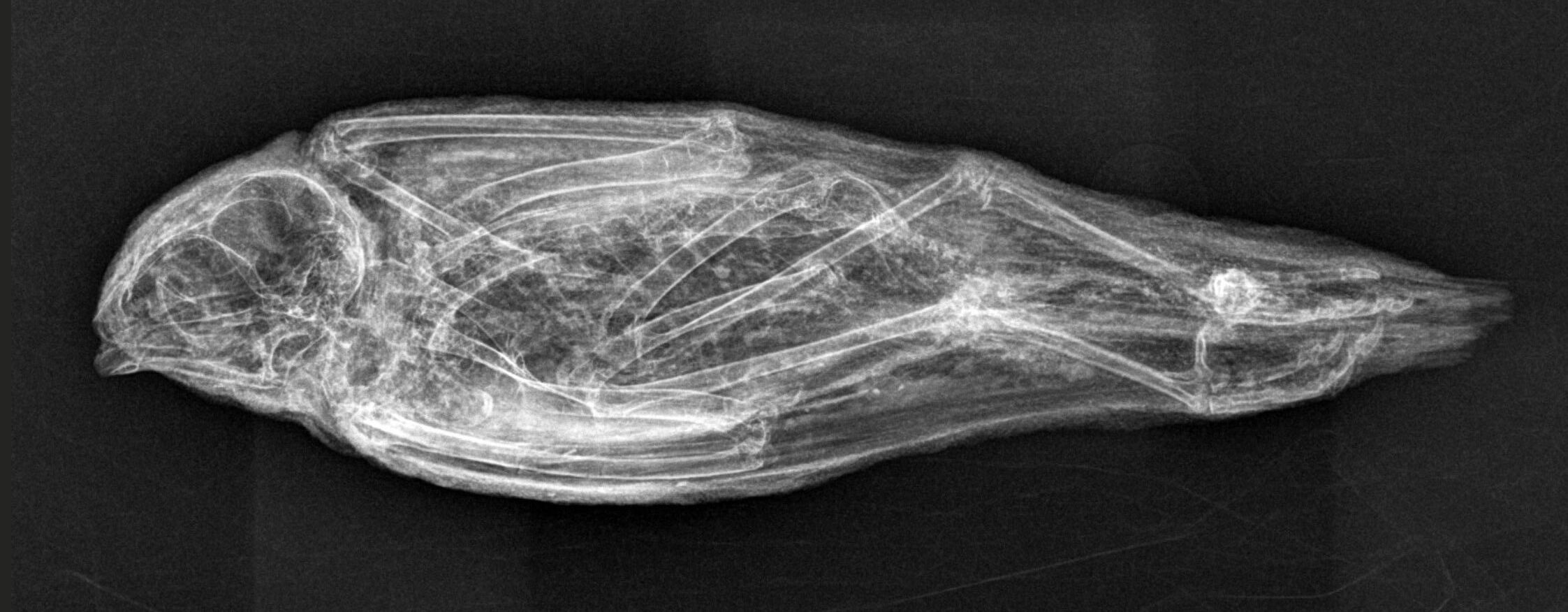
In ancient Egypt, the hawk, or falcon, was sacred to the god Horus, the son of Osiris and Isis. The hawk was the guardian of the king, and was often shown with its wings stretched out behind the head of the king. Hawks like this example were killed and mummified as votive offerings to the god Horus at one of his shrines.
This specimen is unfortunately of unknown date and provenance, it is wrapped in linen bandages in has undergone the same mummification process as humans.
Mummification is synonymous with Ancient Egypt; it was of the most distinguishing features of this ancient culture and has fascinated their contemporary scholars such as Herodotus, the 6th Century Greek Historian, to Victorian and Modern Archaeologists.
This mummified hawk specimen was X-rayed to digitally ‘unwrap’ the specimen and see inside the bandages. X-rays and CT scans are now commonly used to study mummified remains without causing any damage. This non-invasive technique, known as paleoradiology, allows researchers to detect post-mortem damage, identify diseases, and uncover any artifacts buried with the body.

KMA 1993.251 Fragment of painted cartonnage depicting the god Horus. Cartonnage and paint. Third Intermediate/Late Period. Unknown provenance. Height: 242mm.


